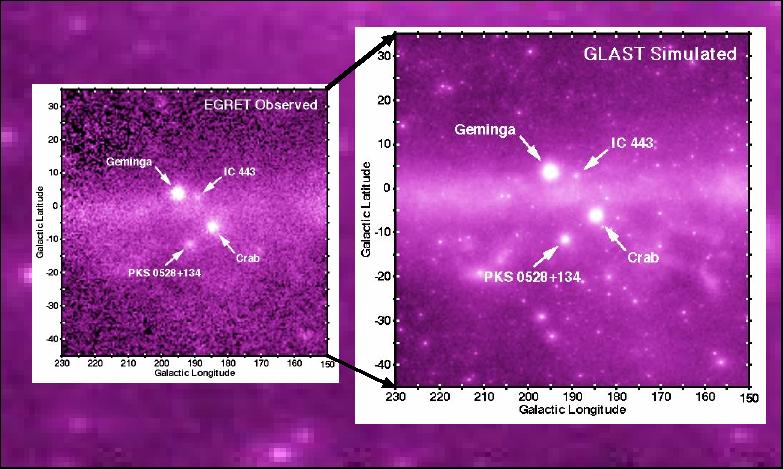
 Credit: EGRET Team
Credit: EGRET Team
The Gamma Ray Resolution Revolution
Gamma Ray astronomers study the most energetic radiation known in the
universe. Because this radiation is so energetic, it is produced in only
the most extreme of physical conditions. But these extreme physical
conditions are also some of the most interesting processes that take place
in the universe: black hole mergers, neutron star collapse, solar and
stellar flares, and the explosive reconnection of matter and antimatter. A
peculiar difficulty experienced by gamma ray astronomers is that it's
impossible to focus high energy gamma rays as you can focus lower energy
forms of light (like visible light, for example). This difficulty has the
practical consequence that gamma ray images are vague, so that gamma ray
astronomers, while they know that there is something interesting going on,
often do not know where this interesting event is taking place. Recent
advances have helped somewhat. The image on the left shows an image of the
"Galactic Anticenter" in gamma-rays obtained by the EGRET
detector on board the Compton Gamma Ray
Observatory. The improved spatial resolution of EGRET allows 4 bright
sources to be resolved in this image: the pulsar known as "Geminga", the
Crab pulsar, and the galaxies IC 443 and PKS 0528+134. Gamma Ray imaging
will greatly improve in the future with the launch of the Gamma Ray Large Area Space
Telescope (GLAST), scheduled for launch in 2005. The image on the
above right shows a simulation of an image by GLAST of the EGRET field. The
four bright sources are easily detected, along with many more fainter
sources. Identification of these faint sources will allow astronomers to
understand all the various and surprising ways the universe manufactures
gamma rays.
Last Week *
HEA Dictionary * Archive
* Search HEAPOW
* Education
Each week the HEASARC
brings you new, exciting and beautiful images from X-ray and Gamma ray
astronomy. Check back each week and be sure to check out the HEAPOW archive!
Page Author: Dr. Michael F.
Corcoran
Last modified June 14, 2001


